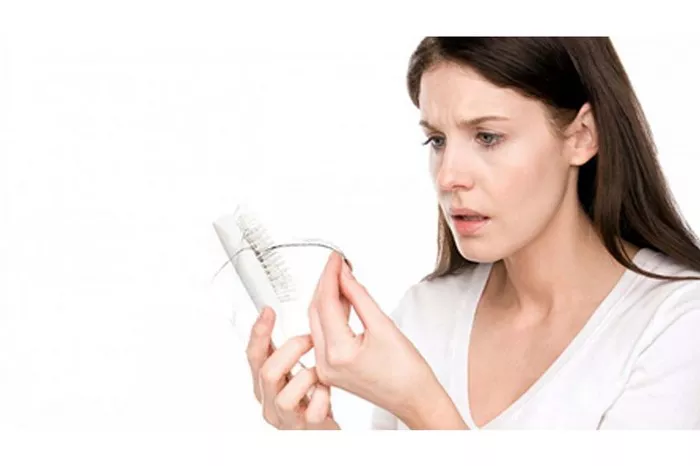In the quest for luscious locks, many individuals often overlook the importance of recognizing the signs of unhealthy hair. Your hair’s condition can be a direct reflection of your overall health, lifestyle choices, and grooming habits. In this article, we will delve into the world of unhealthy hair and equip you with the knowledge to identify and address these issues effectively. So, let’s unravel the mystery of what constitutes unhealthy hair and how you can restore it to its former glory.
Hair Loss: A Distressing Symptom
One of the telltale signs of unhealthy hair is excessive shedding. It’s normal to lose around 50 to 100 hairs a day, but if you notice clumps of hair in your shower drain or on your pillow, it’s time to pay attention. Excessive hair loss can be caused by a variety of factors, including poor nutrition, hormonal imbalances, stress, and underlying medical conditions.
See Also: [Revealed!] The Best Biotique Shampoo for Hair Growth
What is the cause of hair loss?
Identifying the root cause is crucial to addressing the issue effectively.
1. Nutritional Deficiencies
Inadequate intake of essential vitamins and minerals can weaken hair follicles, leading to increased hair loss. Ensure your diet includes nutrients like biotin, vitamin E, and omega-3 fatty acids, which promote hair health.
2. Hormonal Imbalances
Hormonal fluctuations, such as those experienced during pregnancy or menopause, can trigger hair loss. Consult a healthcare professional if you suspect hormonal issues may be affecting your hair.
3. Stress Management
Chronic stress can disrupt the hair growth cycle, leading to hair thinning and loss. Incorporate stress-reduction techniques like yoga and meditation into your daily routine to mitigate its impact on your hair.
Dull and Lifeless Hair
Unhealthy hair often appears dull and lifeless. If your once-shiny tresses have lost their luster, it’s time to take action. Dull hair can be attributed to various factors, including product buildup, environmental damage, and excessive heat styling.
1. Product Buildup
The accumulation of styling products and residues from shampoos and conditioners can leave your hair looking lackluster. Regularly clarify your hair with a clarifying shampoo to remove buildup and restore shine.
2. Environmental Damage
Exposure to UV rays, pollution, and harsh weather conditions can damage the hair’s outer layer, leading to dullness. Protect your hair by wearing a hat or using a protective spray when spending time outdoors.
3. Heat Styling
Excessive use of hot styling tools, such as flat irons and curling wands, can strip your hair of its natural shine. Limit heat styling and use heat protectant products to minimize damage.
Split Ends and Breakage
Split ends and hair breakage are unmistakable indicators of unhealthy hair. When your hair is in poor condition, the ends can become frayed and split, giving your locks a frizzy and unkempt appearance.
1. Proper Hair Care
Regular trims are essential to remove split ends and prevent further damage. Additionally, use a deep conditioning treatment to nourish and strengthen your hair, reducing breakage.
2. Gentle Handling
Avoid vigorous brushing and harsh hairstyles that can cause breakage. Instead, opt for wide-toothed combs and gentle detangling techniques to minimize stress on your hair.
Excessive Dryness or Oiliness
Unhealthy hair can swing to the extremes of dryness or oiliness, both of which are problematic. Dry hair lacks moisture and can feel brittle, while excessively oily hair can appear greasy and attract dirt and impurities.
1. Hydration
To combat dryness, use a moisturizing shampoo and conditioner to infuse your hair with moisture. Deep conditioning treatments and natural oils like coconut oil can also help restore hydration.
2. Oil Control
For oily hair, opt for a clarifying shampoo that can effectively remove excess oil and impurities. Avoid overwashing, as it can stimulate the scalp to produce even more oil.
Healthy Hair Starts at the Scalp
The condition of your scalp plays a pivotal role in the health of your hair. Scalp problems like dandruff, itching, and inflammation can indicate an unhealthy scalp environment, which can hinder hair growth.
1. Dandruff Management
Dandruff can lead to flaky, itchy scalp and can be caused by various factors, including dry skin or a fungal infection. Use an anti-dandruff shampoo and maintain good scalp hygiene to combat this issue.
2. Scalp Massage
Regular scalp massages improve blood circulation and stimulate hair follicles, promoting healthy hair growth. Incorporate this into your routine for a healthier scalp.
In conclusion
Recognizing the signs of unhealthy hair is the first step toward restoring your hair’s vitality. Whether it’s excessive shedding, dullness, split ends, texture issues, or scalp problems, addressing these concerns promptly can lead to healthier, more beautiful hair. Remember, a combination of proper hair care, a balanced diet, and a healthy lifestyle can make a significant difference in achieving the vibrant, head-turning hair you desire.


